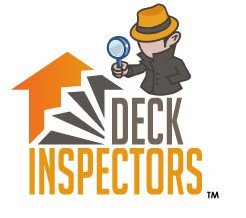When California passed SB 721, the goal was clear: to protect residents by requiring regular inspections of exterior elevated elements (EEEs), such as balconies, decks, stairways, and walkways, in multifamily apartment buildings. However, beyond safety compliance, this law offers a surprising silver lining for property owners and landlords: the ability to detect issues early. By uncovering minor problems before they escalate, SB 721 inspections can help property owners avoid costly repairs, legal liabilities, and even life-threatening structural failures.
Catching Problems Before They Snowball
Consider this hypothetical case: An apartment complex in Santa Ana was scheduled for its first SB 721 inspection. At first glance, the balconies appeared sound. But during the inspection, the licensed professional noticed soft wood around the ledger board where the balcony connected to the building. A moisture reading revealed water intrusion had begun to rot the wood behind the stucco façade—a problem invisible from the surface.
The repair? $2,500 for localized replacement and resealing. Had this gone unnoticed, it could have evolved into full ledger failure, risking collapse. Such a structural repair could easily exceed $20,000 and necessitate tenant relocation, along with significant liability exposure.
This is the hidden gem of SB 721: it gives landlords and property managers a window of opportunity to address minor wear and tear before it leads to catastrophic outcomes.
Small Fixes, Big Savings
Another example: a property owner in Riverside had a stair landing that passed visual inspection but, thanks to SB 721’s requirement for probing and moisture testing, was found to have early-stage rust forming on the steel support bracket embedded in concrete. No outward cracks or instability were visible, but water had begun seeping into the concrete, accelerating corrosion.
The fix involved cleaning the rust, applying a protective coating, and installing proper drainage to prevent further water buildup, resulting in a total cost of $1,800. Left untreated, the corrosion would have eventually required concrete demolition and bracket replacement at 10 times the cost. More importantly, it could have posed a safety risk to residents and resulted in insurance claims, legal fees, or even worse consequences.
These kinds of early interventions show that SB 721 isn’t just about compliance—it’s a proactive tool. By catching degradation early, property owners can spread repair costs over time, avoid emergency shutdowns, and maintain a safe and satisfied tenant base.
The Preventive Power of SB 721
Too often, property maintenance follows a “wait until it breaks” approach. But SB 721 is changing that. It mandates routine checkups by qualified professionals, transforming reactive maintenance into proactive asset management.
By identifying small, often hidden issues, SB 721 inspections preserve building integrity, reduce liability, and extend the lifespan of costly structural components. In a competitive rental market like Southern California, well-maintained properties also stand out to tenants seeking safety and reliability.
At our deck inspection company, we specialize in uncovering these “hidden gems” before they turn into budget-breaking problems. Don’t wait for a disaster to force your hand. Schedule your SB 721 inspection today and take control of your property’s future.



